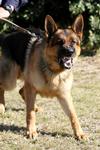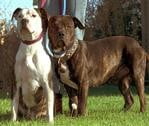When dogs attack (page 2)
Who is more at risk of a dog attack?

Young children and the elderly are those most at risk of being the victims of a dog attack, with the Royal Children’s Hospital in Brisbane reporting a few years ago that children under the age of 10 represent 43% of emergency treatments at hospital where dog attacks are involved. In another study, a total of 12% of children were admitted to hospital suffering from an animal-related injury.
What’s important is that children are more likely than any other age group to be injured by an animal, and that statistics show that over half of the attacks occur outside the home.
Another unsettling fact is that the majority of dog attacks occur on a child’s head and upper torso.
But why children?…
Children are extremely vulnerable to dog attacks because:
- they are often of similar to the dog in size, height and weight
- children do not know how to handle themselves around dogs
- children spend more time in the dog’s environment (in the garden, playing on the floor and so on) than their parents do
- children are active, noisy and unpredictable in their actions – their screams and fast, erratic movements can often imitate those of a prey animal, encouraging dogs to give chase and attack
- considering the immense ability of dogs to detect smells, children often proffer the challenge of different odours and scents to adults.

The sad statistics also confirm that:
- three quarters of dog attacks occur in boys
- more bites occur on the weekends
- one in seventeen cases requires admission to a hospital.
That’s scary stuff.
What breeds are more likely to show aggression?
Of course, when it comes to any behaviour, genetics plays a large role, as does the manner in which the dog was raised, bringing the whole “nature vs nurture” debate into practice. Some dogs come into the world with an inbuilt need to bite that is more prevalent than in other dogs, bringing in the ‘nature’ side of the argument. Other dogs may have experienced trauma at a young age that then brings in the need for the “fight-flight” response, showing the ‘nurture’ side, where life’s experiences nurture unwanted behaviour.


Size is, of course, important when talking about the most aggressive dog breeds. While the Maltese may be the most aggressive dog towards the family, its bite is significantly less powerful than the bite of the Labrador. Be aware, though, that all dogs can cause significant injury to people, regardless of their size.
So this holiday season, while you have the family gathered around the barbeque, give some thought to your four-legged mate. If he looks uneasy or worried, keep him away from the festivities and the children, and you’ll be able to finish your celebrations safely.
